Why am I Gaining Weight Despite Diet and Exercise? │ QA
If you’re careful with your nutrition, working out weekly, and still experiencing problems with your weight, take a moment to read this QA.

Your bags are stuffed to the brim with all of your favorite travel essentials: extra sunscreen, that summer outfit you’ve been saving since last year, and beachwear you’ve spent all winter getting summer-body ready for. It’s safe to say that you’re mentally checked out from pressing work responsibilities and ready to soak up the sun on warm sandy beaches, drinking a surplus of tropical refreshments and putting away your micro scale for your summer adventure!
As a freelance writer and model, my work demands that I be on call and be very mobile. At any given moment I can be asked to pick up and go, and that can range from just about any location, with no guarantee that I will have access to a nearby LA Fitness.
The great news is that you don’t have to let your commuting or upcoming travel plans get in the way of your fitness goals and progress! You might actually see added benefits to working out while traveling because you are subconsciously telling your mind that fitness is everywhere I am, not solely in the confines of the gym! Remember, it’s all about integrating fitness as a lifestyle not solely a destination for producing results.
Granted, in comparison to a weekly regiment, these workouts are a bit more “relaxed” in intensity, but hopefully, with these easy tips, you too can maintain the progress you’ve worked so hard to reach pre-vacation season!

If conditions are safe and you have time to spare, save the cab fare and take a nice stroll in the area. Not only will you acquire major steps towards your daily step-goals, but you will simultaneously be able to take in and explore the city or perhaps coastal regions of your vacation time.
I have been able to experience far more on foot when traveling than relying on the convenience of public transportation. So, at any opportunity, plan ahead, wear your comfy shoes, and get those steps in!

Whether you are stuck inside your hotel room/Airbnb due to poor weather conditions or you aren’t familiar with the area, working from your “home-away-from-home” might be your only resort for added physical activity.
No worries here, a 15-30-minute full body HIIT blast can do just the trick!
Mini HIIT Blast Circuit:
(Repeat 2-5 times depending on your fitness level)

We get it, you’re on vacation. This is the time when you can completely sign-off from those at home responsibilities and break away from the mundane routine of every-day-life. The last thing you want to do is give yourself the chore of having to carve out time for a workout when truth be told, you would much rather sink your toes in the exfoliating warm sandy beaches.
Remind yourself that fitness can be experienced in many diverse and creative ways. You can swim, go horseback riding, hike, surf, go dancing, or boogie board and burn some calories while having fun. When we make fitness a part of the experience, it becomes more welcoming and less demanding to our physique!

What’s in my fitness travel bag:
Travel fitness essentials
•Tennis shoes
•Jump rope
•Resistance bands (1-3)
•Disks
Whether at home or island hopping, one thing you can always control is what you’re putting in your body as much as what you’re doing with your body on vacation. Enjoy what may seem like never-ending cheat meals and not counting calories or sticking to your macros. You’re on vacation—embrace it! While you’re enjoying the fruits of your labor, upping the hydration is the golden rule of all golden rules!
Consider that your body is probably working overtime in a week of relaxing and fun, so when you can— hydrate, hydrate, hydrate! If you have access to fresh citruses like lemon, limes, grapefruit or oranges, increased electrolytes and vitamin C will help replenish cells, relax muscles and keep that summer glow working from the inside out!
Wherever your travels take you, if you can’t find an LA Fitness nearby or much room in your suitcase for all your gym gear, know that your goals don’t have to start or stop solely on the convenience of your gym accessibility. Living well and doing well is based on intention and wherever you decide to take it!
To find an LA Fitness near you, click here.
If you’re careful with your nutrition, working out weekly, and still experiencing problems with your weight, take a moment to read this QA.
Blood sugar control isn’t easy. These are Debbie’s top recommendations for how to address weight control with Type II Diabetes.
It's easier to work hard when you’ve got a game plan. Here are some options to help keep you moving until the last second of your workout!
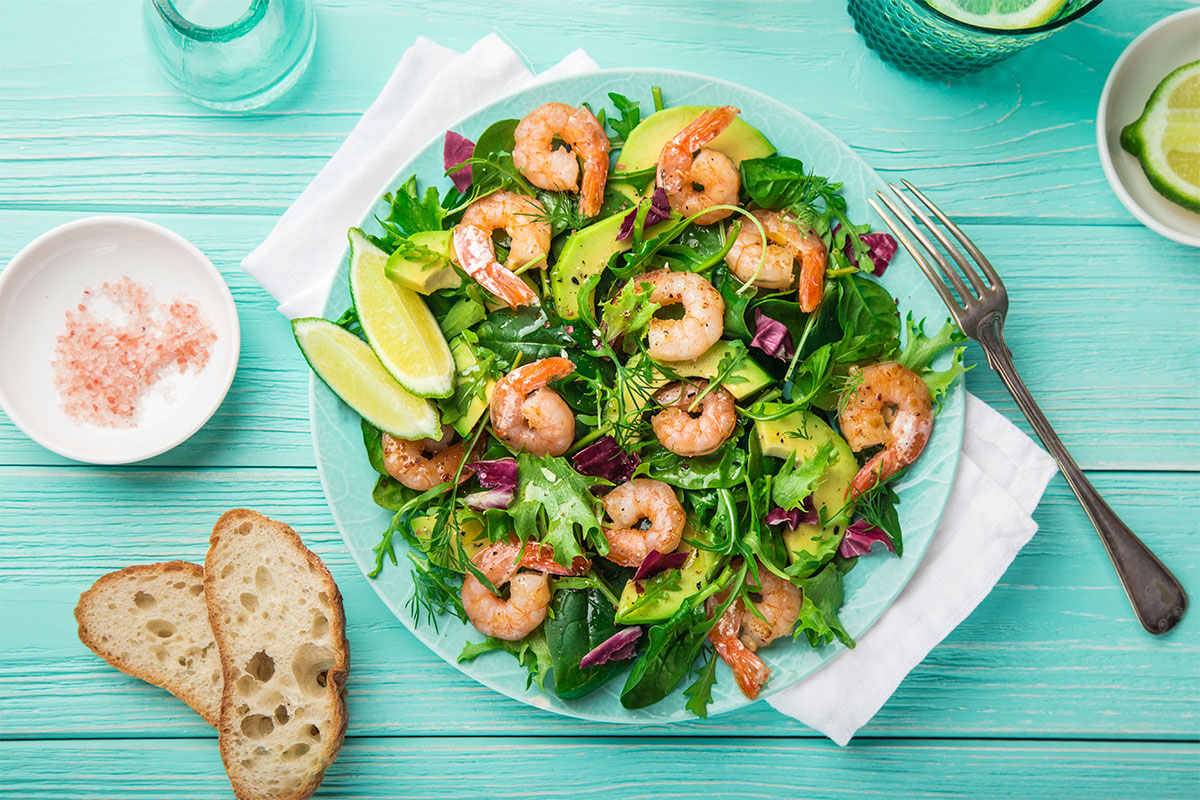

I am a 60-year-old male in fairly good shape. I’m lean with 16 to 17% body fat. I am in the gym three times a week, usually after work for about two hours each day. I start with 15 min. of cardio and I do abs every day between sets. I have a GNC protein shake for breakfast every day, oatmeal at 10am, salad for lunch, and on work out days I use a C4 pre-workout and a GNC Performix Shake post-workout. I then have a salad with lots of vegetables for dinner. I try very hard to limit sugar, carbs, and red meat.
I see improvements in my workout strength. I see definition improvements (no bulking) but the last little fat around the tummy remains. I started at 210 lbs. 6 years ago. I have been running around 170 to 175 lbs. for about 4 years now. The body fat number is staying around 17%.
What should I eat for lunch before working out? And what should I eat for dinner after I work out? And what should I eat on non-workout days?
– Larry B.

Kudos on your consistent power workouts! I would recommend that on your workout days your lunch salad include a legume, lean protein and healthy fat in addition to the greens since you have several hours to fuel before exercise. For example, choose one* from each column:
|
Greens |
Legume |
Lean Protein |
Healthy Fat |
Other Veggies x2 |
|
Spinach |
Edamame |
Chicken Breast |
Avocado |
Tomato, Carrot |
|
Kale |
Chickpeas |
Shrimp |
Olives |
Artichoke, Broccoli |
|
Mesclun |
Black Beans |
Tuna |
Diced Walnuts |
Cucumber, Radish |
|
Leaf Lettuce |
Kidney Beans |
Turkey Breast |
Sliced Almonds |
Celery, Red Onion |
|
Cabbage |
Cannellini Beans |
Salmon |
Pepitas |
Bell Pepper, Beet |
At dinner, I’d suggest including a starchy vegetable such as corn, yam or butternut squash and tofu or low-fat cheese to prop up your evening salad after exercise. You can maintain your normal eating regimen on non-workout days through a solid breakfast to replace the protein shake is advised. Just keep to the same calorie level.
Here are four options:
– Debbie J., MS, RD
This article should not replace any exercise program or restrictions, any dietary supplements or restrictions, or any other medical recommendations from your primary care physician. Before starting any exercise program or diet, make sure it is approved by your doctor.
Some questions have been edited for length and/or clarity.
 Have a nutrition question? Our registered dietitian is ready to help!
Have a nutrition question? Our registered dietitian is ready to help!
Email nutrition@lafitness.com or submit your question below and it may be featured in an upcoming article!
If you’re careful with your nutrition, working out weekly, and still experiencing problems with your weight, take a moment to read this QA.
Blood sugar control isn’t easy. These are Debbie’s top recommendations for how to address weight control with Type II Diabetes.
It's easier to work hard when you’ve got a game plan. Here are some options to help keep you moving until the last second of your workout!

Nearly half of the adults in the U.S. have high blood pressure. This means that you or someone close to you has a blood pressure reading at 130/80 or higher.
It wasn’t always this way – just a couple of years ago 1 in 3 Americans had high blood pressure instead of nearly 1 in 2.
So why the change? Does this mean we’re getting less healthy?
It’s quite the opposite. Based on years of scientific study, the change means we’re actually more aware of the effects of elevated blood pressure.
Two years ago, the definition of high blood pressure changed from 140/90 to 130/80 (technically 130+ or 80+, but we’re keeping it simple here). The result is that more people became classified as having high blood pressure. It doesn’t mean that thousands of people became ill overnight, though. It means we want people to know that high blood pressure is serious, and that it can begin damaging your blood vessels and organs at lower levels than previously thought, particularly if you don’t act to keep your numbers from rising.
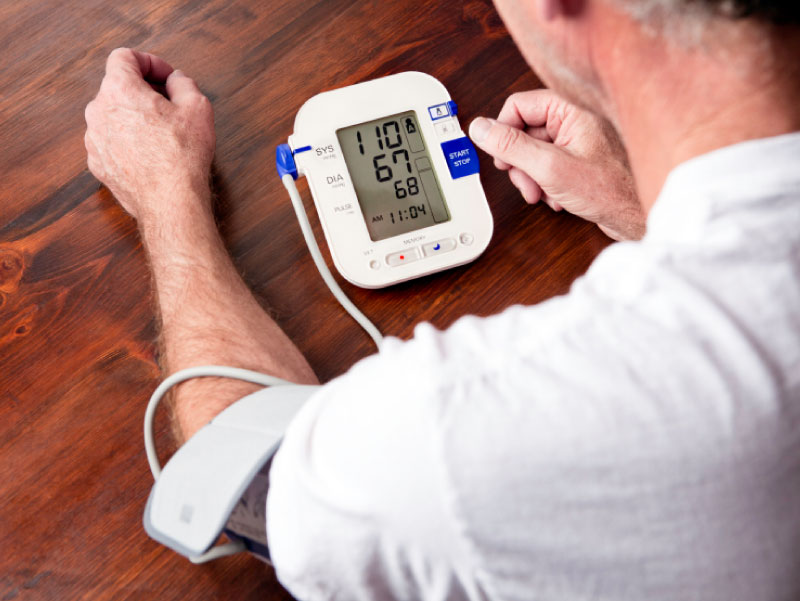
It’s worth noting that blood pressure tends to rise naturally as we age, so it typically hasn’t been on the health radar for people under age 45. However, with the new definition, an important health alert was sent to people in their 20s and 30s to pay attention to their blood pressure levels. Among men aged 20 -44, the rate of high blood pressure nearly tripled. Among women in that age range, it doubled.
The American Heart Association has created an interactive tool that can help you not only identify your health risk according to your blood pressure level, but also provide notes on what actions you can take to ensure it stays at, or gets to, a healthy level. You can check it out at www.heart.org/BPlevels.
Making changes that matter can have a significant impact on your blood pressure levels. In fact, most of those who suddenly find themselves with high blood pressure under the new definition will be given a “prescription” for lifestyle changes – not medicine – that can lower their pressure. Even for those who do require medication to control their levels, lifestyle changes help those meds work better and can even help you stay on lower doses. Some examples of a lifestyle change prescription include:
Physical activity:
A healthy diet:
Sodium (i.e. salt):
Weight loss:

The benefits of lifestyle change can add up quickly. Many of the same lifestyle prescriptions that lower blood pressure also reduce the risk of other dangerous conditions such as diabetes, high cholesterol, and heart disease. Eating a healthy diet, maintaining a healthy weight, and getting regular physical activity can help you lead a healthier and longer life!
Article contributed by Sondra DePalma, DHSc, PA-C, Cardiology, PinnacleHealth Cardiovascular Institute, Harrisburg, PA
American Heart Association Volunteer
Disclaimer: Some slight edits may have been made to the article’s original copy for grammatical reasons and/or clarity.
If you’re careful with your nutrition, working out weekly, and still experiencing problems with your weight, take a moment to read this QA.
Blood sugar control isn’t easy. These are Debbie’s top recommendations for how to address weight control with Type II Diabetes.
It's easier to work hard when you’ve got a game plan. Here are some options to help keep you moving until the last second of your workout!
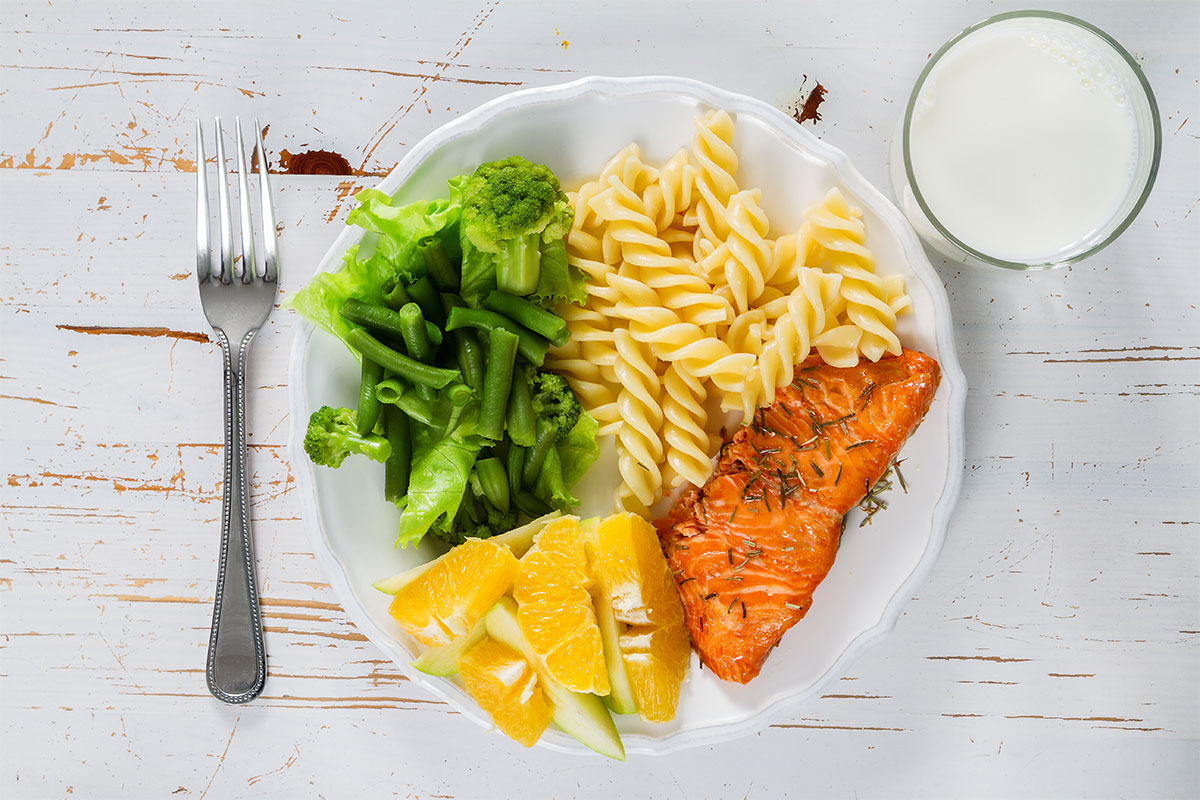

Please help me better understand portion control. How much is too much versus too little? Is there a chart to help explain the differences between men and women? Does age and weight matter? Are there ways to make portion controlling easier?

Controlling portions is a way to manage volume of food served and thus consumed. There is no specific way that is the best, just as there is no perfect serving for all people of any one particular food. A standard portion is a means to compare the nutritional content of different foods, e.g. “a half-cup of ice cream versus a half-cup of popcorn…”
The approach I recommend is a combination of a) the American Institute for Cancer Research’s “New American Plate” which has a greater proportion of plant foods than a typical diet and b) serving sizes adjusted for energy needs as suggested by MyPlatePlan. The key is to know your total caloric requirement first! This takes into account gender, age and weight.
Here are some common portion sizes provided in terms of measure with a corresponding way to “eyeball” the relative portion size in order to help you identify what portions look like. You can also practice by using your scale to weight various foods and then attribute a way to gauge that portion size by using objects such as your hands and fingers. See the examples below.
Bread, Cereal, Rice and Pasta (commonly 1-3 per meal)
Vegetables (goal: 2-3 per meal)
Meat and Protein (commonly 1-3 per meal)
Fats and Oils (limit to 1 per meal)
Fruit (commonly 2-3 per day)
Milk, Cheese and Dairy products (commonly 1-3 per day)
– Debbie J., MS, RD
This article should not replace any exercise program or restrictions, any dietary supplements or restrictions, or any other medical recommendations from your primary care physician. Before starting any exercise program or diet, make sure it is approved by your doctor.
Some questions have been edited for length and/or clarity.
 Have a nutrition question? Our registered dietitian is ready to help!
Have a nutrition question? Our registered dietitian is ready to help!
Email nutrition@lafitness.com or submit your question below and it may be featured in an upcoming article!
If you’re careful with your nutrition, working out weekly, and still experiencing problems with your weight, take a moment to read this QA.
Blood sugar control isn’t easy. These are Debbie’s top recommendations for how to address weight control with Type II Diabetes.
It's easier to work hard when you’ve got a game plan. Here are some options to help keep you moving until the last second of your workout!

It takes more than regular walks and the daily crossword to keep your brain in top cognitive shape! What you eat plays a larger role in mental fitness and preventing age-related decline in brain function. Like the rest of your body, the brain needs to be properly nourished from the start for optimum performance. An overall healthy diet is great, in addition there are certain types of food that promote brain health. Here’s a rundown of these brain preservers:
Oily fish like wild salmon, albacore tuna and sardines provide docosahexaenoic acid (DHA), a type of omega-3 essential for brain development and function, helping neurons trigger and cells regenerate. Long-term intake of adequate DHA has been linked to improved memory and learning ability. People who regularly eat fish are less likely than their peers to have depression. In fact, the American Psychiatric Association has endorsed the fatty acids in fish as an effective part of depression treatment.1
You can’t start too early! The FDA and EPA agree eating fish is especially important for pregnant or nursing women because it helps with the growth and development of children’s brains and even helps boost IQ.
Vegans can get their omega-3s from flaxseed, walnuts, chia seeds, algae-like seaweed or supplements.

Green leafy vegetables like spinach, kale, and collard greens provide vitamin K, folate, beta carotene, and lutein – nutrients that may support brain function and cognitive health.2 Eat at least one-half cup serving of leafy greens daily to get enough of these neuroprotective compounds.
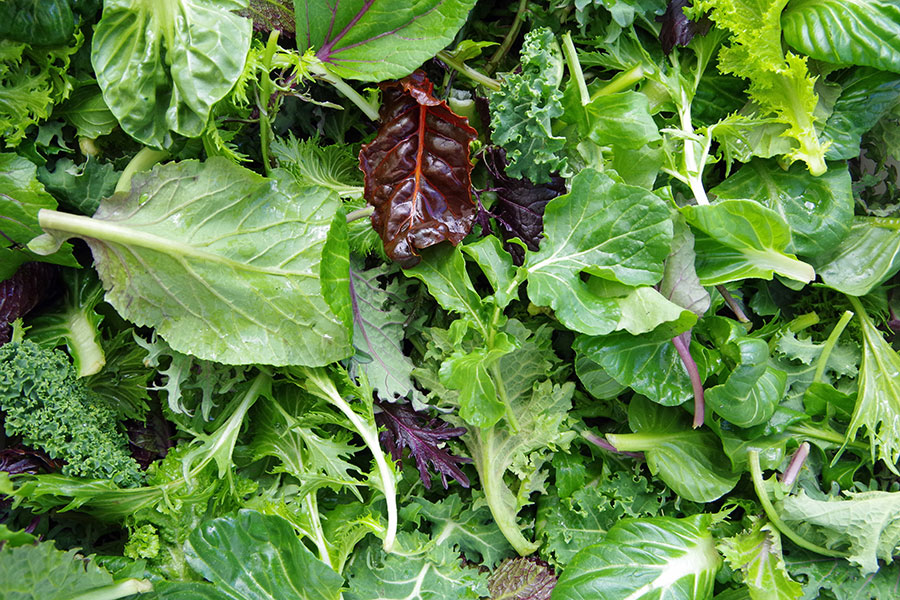
Powerful oxidation fighters that protect the brain3 are found in vegetables (broccoli, leafy greens), fruits (berries), nuts and the spice curcumin. Antioxidants’ positive effects on neural function are the reason why such foods are encouraged for younger people to slow age-related memory decline and prevent Alzheimer’s disease.

A cardiovascular protective diet is an important factor in battling age-related declines in brain function. Cerebrovascular disease, Alzheimer’s disease, and dementia are linked by the circulatory system; vascular cognitive impairment and vascular dementia stem from damage to the vessels leading to the brain.
Good nutrition in younger people is associated with better blood flow and increased brain size, thus protecting the brain from age-related volume decrease. Also, maintaining a healthy weight may preserve gray matter from dementia-related decline.4

Because they counteract the effects of sodium on fluid balance, potassium-rich foods are important to combat hypertension, a well-documented risk factor for dementia. Potassium-rich foods include potatoes, tomatoes, bananas, coconut water, avocado and winter squash.
The National Academy of Sciences even assigned “managing blood pressure for people with hypertension” as one of the three classes of interventions to prevent cognitive decline.5 And the MIND diet (a combination of DASH “Dietary Approaches to Stop Hypertension” with a Mediterranean diet) is associated with preservation of stroke survivors’ brain function.

Following a Mediterranean diet might improve cognitive function in seniors and delay the onset of Alzheimer’s disease by a few years.6,7,8 A Mediterranean diet is characterized by high intake of vegetables, legumes, fruits, cereals, fish and unsaturated fatty acids (mostly as olive oil), low intake of saturated fatty acids, meat and poultry, low/moderate intake of dairy products and a regular but moderate amount of alcohol (mostly wine drank at meals).
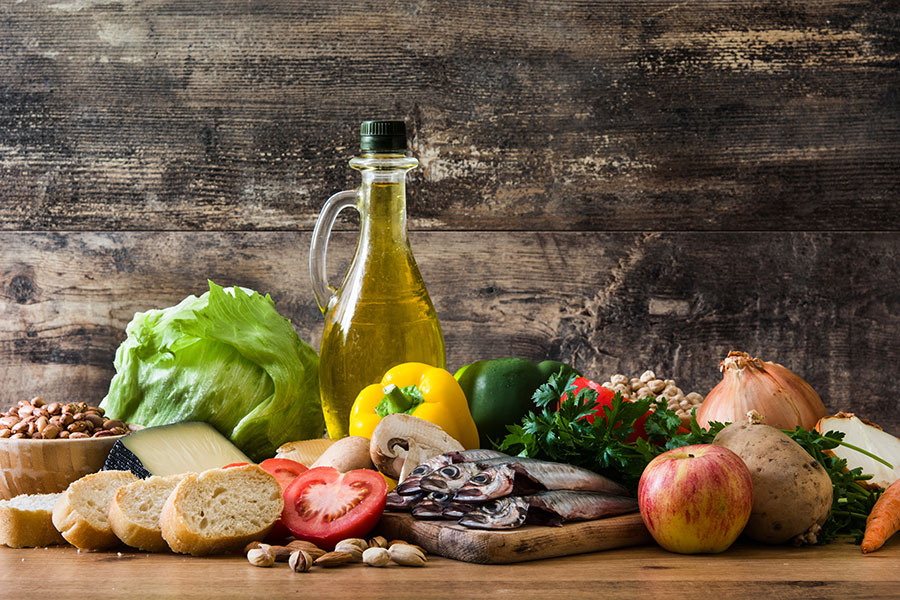
Coffee consumption is correlated with a reduced risk of developing Alzheimer’s disease and Parkinson’s disease.9 This neuroprotective benefit is independent of caffeine but may be related to the roasting process due to one of coffee’s polyphenolic compounds.10

Whether you choose fish, potassium-rich fruits and vegetables, coffee or an array of heart-healthy powerhouse foods it’s possible to boost brain power, function, and mental wellness while forestalling degenerative brain disease through diet. Nutrition is often the best medicine – now that’s food for thought!
References:
If you’re careful with your nutrition, working out weekly, and still experiencing problems with your weight, take a moment to read this QA.
Blood sugar control isn’t easy. These are Debbie’s top recommendations for how to address weight control with Type II Diabetes.
It's easier to work hard when you’ve got a game plan. Here are some options to help keep you moving until the last second of your workout!
Be the first to know about exclusive
content, deals and promotions